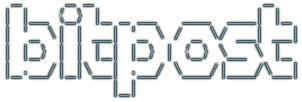You can directly delete iterators while looping through associative containers like set and map:
for(auto itue = usersByEmail_.begin(), itue_end = usersBySecret_.end(); itue != itue_end; )
{
if ((*itue)->bDeleted())
{
// NOTE We could do more cleanup work here if needed.
itue = usersByEmail_.erase(itue);
} else ++itue;
}
With sequential containers like vector, you should use the erase-remove idiom. Here’s an example for my multi-indexed sets of pointers that uses a lambda to keep the code tight. runsByRank_ is of my sorted_vector type:
runsByRank_.erase(
remove_if(
runsByRank_.begin(), runsByRank_.end(),
[]( StockRun*& psr )
{
// NOTE We could do more cleanup work here if needed.
return psr->bDeleted();
}
),
runsByRank_.end()
);
I’ll try to get my quick-http skeleton app updated with these best practices soon. As of now it does not include any delayed-deletion pattern.




